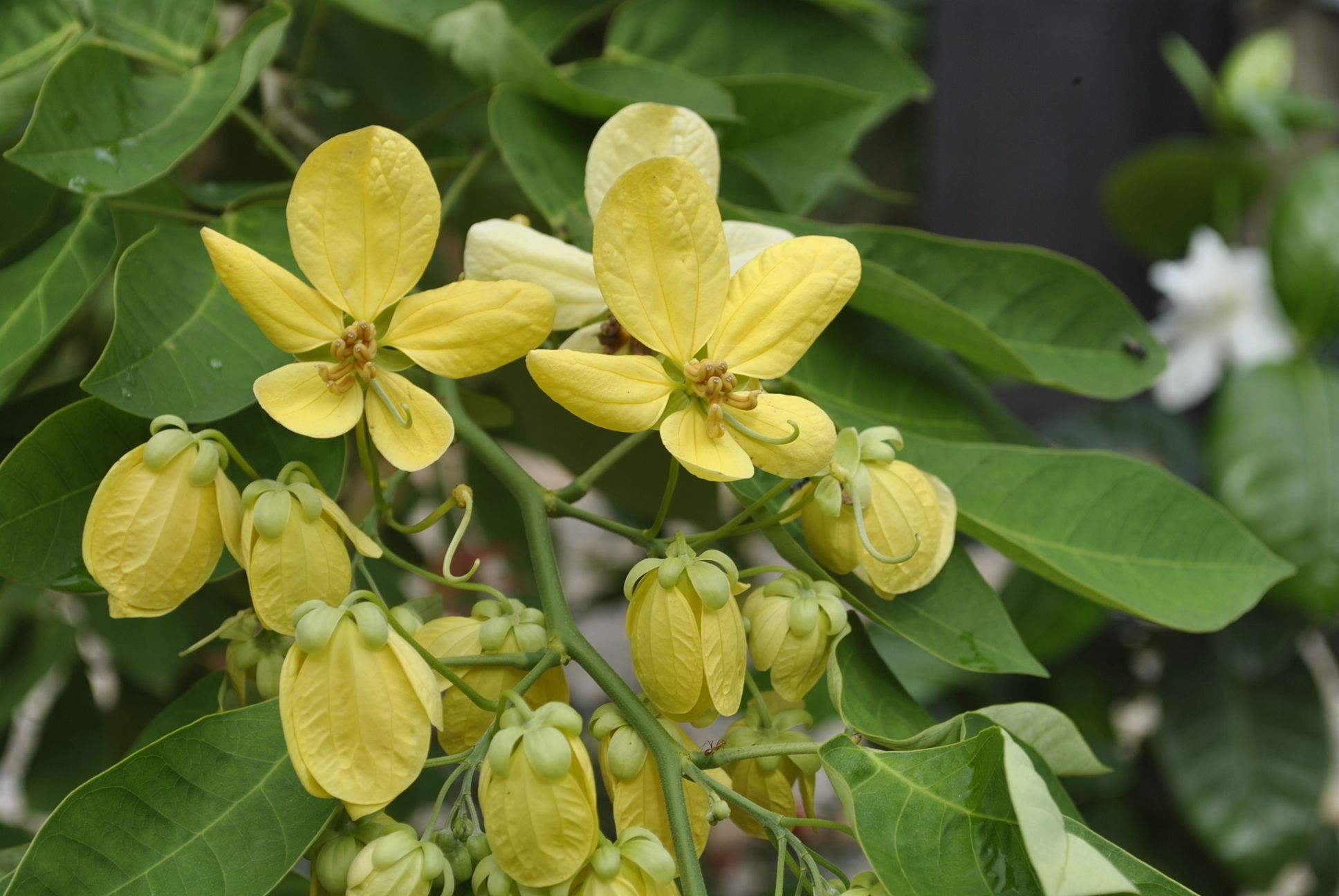Senna nitida (Rich.) H.S.Irwin & Barneby
The growth habits varies according to the climate in which it is grown. In USDA hardiness zones 9 through 11, it will grow as a large shrub 5 to 10 feet in height and 8 to 10 feet wide. In the warmer regions of zones 9 to 11, it can reach the size of a small tree, 10 to 20 feet tall and wide. The tree can also be grown in a pot in cooler regions as long as it is brought indoors or placed in a sheltered location in the winter.
When grown outside, this tree thrives in full sun and regular watering. The foliage of the tree is delicate and a deep glossy green color. As the tree is in bloom, it produces sprays of drooping, yellow and orange flowers. These flowers remain on the tree for a long period of time, providing long-term interest in the garden.It is an ideal choice for brightening up any spot in the garden. Requiring minimal care once established and thriving in both partial and full sun areas, this tree provides a beautiful focal point with its bright yellow and orange flowers. With regular watering and appropriate care, this tree will provide beauty in the garden for years to come.
- Family: Fabaceae
- Habit: Shrub or small tree
- Habitat: Open areas, savannas, and disturbed habitats
- Status : Common
Vernacular names
- English - Golden Rain Tree
- Spanish - Sennita lustrosa
- French - Séné lustré
- Portuguese - Cássia-lustrosa
Medicinal Uses
Senna nitida has been used in traditional medicine for various purposes, primarily for its laxative properties. The plant contains compounds called anthraquinones, which have a laxative effect by stimulating bowel movements. It is often used to relieve constipation, but its use should be cautious and under the guidance of a healthcare professional, as excessive use can lead to dependence or other gastrointestinal issues.
